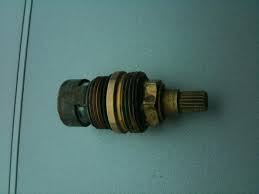Cartridge identification is a very important task for anyone who is an ardent gun enthusiast. It is important to identify the right cartridge whether it is while reloading or collecting. While this may not be the only way to identify the right cartridge, this is one way to go about it: look at the headstamp. If there is one, because in many instances, the headstamp will tell you exactly what it is.
The headstamp is the stamped marking on the top of a cartridge. Information that can be obtained from the headstamp is huge and often depends on the intended purpose or use of the cartridge and even has information as to who manufactured the cartridge. Headstamps usually consists of one or more information details. Cartridges intended for civilian or sporting purposes usually will only have two elements mainly – one specifying the chambering and the other will be information regarding the manufacturer. Military cartridges on the other hand will have a lot more information. This may include cartridge, date and place of manufacture plus other marks which can be used for identifying the cartridge.
Segmented
Some of the headstamps are segmented. That is, they have maybe more than one segmented lines that divide the head into two or four equal parts. This usually indicates an older cartridge, since most countries discontinued using segment lines shortly after World War 1. Usually, the segment lines are easily identifiable with the clock – face orientation, with the 12 o’ clock at the top, 3 o’ clock at the right, 6 o’ clock at the bottom and 9 o’ clock at the left. Prior to World War 2, the US Military headstamp had two segment lines, one with the factory code at 12 o’ clock and the date at 6 o’ clock. After the war, many arms manufacturer started increasing the quantity it produced over the years, which led to new designs and make without any standardization process.
Some went with three segment lines and some went with the usual four being 12, 3, 6 and 9 o’ clock. Worldwide, there are over 800 Military headstamps in existence plus some over 400 commerical headstamps. All these have come into existence at different time periods through history. Obviously, as you can understand, this has become a complex and highly specialized field.
Apparently, there were about 15 odd companies that manufactured ammunition at various times, particularly during the 1860 – 1900 periods in history. This is apart from the large number of private organizations which manufactured ammunition during the World War 1 and World War 2 time.
Writing about identifying cartridges in detail can go into a whole book which can seem very interesting for a gun enthusiast. Guns and ammunition needs to be studied thoroughly so that you will know which ammunition is apt for which machine. There are several books available in the market which gives detailed step by step instructions on identifying cartridges and ammunition. Or if you need expert advice, walk into Diamond K Brass and talk to one of our experts!
